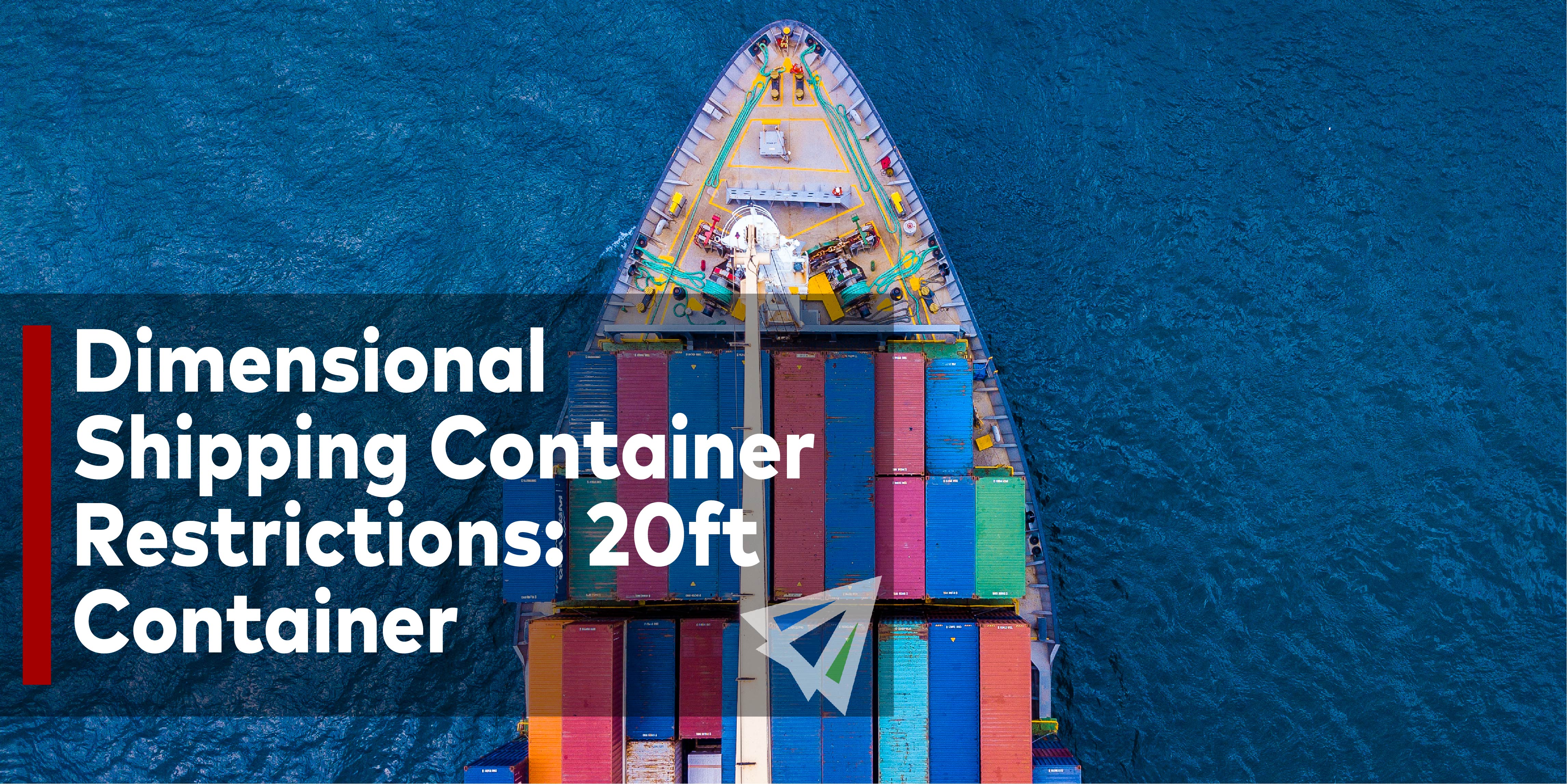It’s easy to think that all the details surrounding an international shipment just “happen”. You tell your forwarder what you need to ship, where it’s coming from, and where it’s going to and the “poof!” – it’s on its merry way.
Unfortunately, it’s not that simple. Aside from tariffs and product type, hazardous materials, and other shipment-specific concerns, you also have to worry about how you’re going to fit your cargo into its shipping container. Different shipments require different sized containers, and the pricing difference varies enough between a standard 20′ and a standard 40′ container to make it worthwhile to figure out the exact amount of room you need for you shipment.
20ft Shipping Containers: Dimensional Restrictions
Here is an overarching review of dimensional restrictions regarding a standard 20ft international shipping container:
Width
Unfortunately, when it comes to shipping containers, the loadable width of the container is not a straightforward number. The internal width of the container differs from what you are actually able to load into the container due to the door and hinges taking up some room.
For a standard 20ft shipping container, the maximum width is 7’8″. That means the internal space, once you’re inside the container, is maxed out at 7’8″ wide. However, this is different from the loadable width, which includes the space that is taken up by the door, latches, and hinges. The total loadable width on a standard 20ft shipping container is right around 7’4″.
That difference may not seem significant even if your product isn’t near that width. But once the products have been stacked, packaged, padded, and braced, every bit of space counts. Make sure that your product – whether unbraced or braced – is able to make it in and out of the shipping container with ease.
Height
Same is true for the height of the container – while the inside may fit your product, that doesn’t mean you will be able to successfully load it in without any trouble.
On a standard 20ft shipping container, the absolute maximum height is 7’9″. But the total loadable height is 7’4″. That means even if your product will barely make it into the max-height of a standard 20ft shipping container, you can’t guarantee it will be easy to get it out.
Make sure you plan for all additional stacking, packing, padding, and blocking and bracing that your cargo may need when finding what shipping container is right for you.
Length
The length of a standard 20ft shipping container is pretty straightforward, but it’s actually NOT a perfect 20ft. When you factor in the container, welding, bottom and side edges, and the doors, the internal max length of the container is 19’3″. That may vary between manufacturers, but for the most part you have to be careful if your shipment is an exact 20′. If your shipment is over 19′ long, make sure to talk with your freight forwarder about whether or not it will fit in a standard 20ft shipping container. We’re happy to take a phone call from you to answer your questions as well!
Conclusion
Turns out “fits like a glove” isn’t the best moto to follow when packing your standard 20ft shipping container. While the figures are relatively simple, the width and height of the container varies between internal and loadable numbers. Simply put, the maximum width and height of a container are different from the loadable width and height due to the opening – the door, hinges, and latches take up room, ultimately making it difficuly to use all of the space in a standard 20ft shipping container.
If you are looking for help regarding which shipping container you should be buying for your next international shipment, reach out to a team member at Interlog USA and we’d be happy to have a quick conversation and give you some recommendations!
